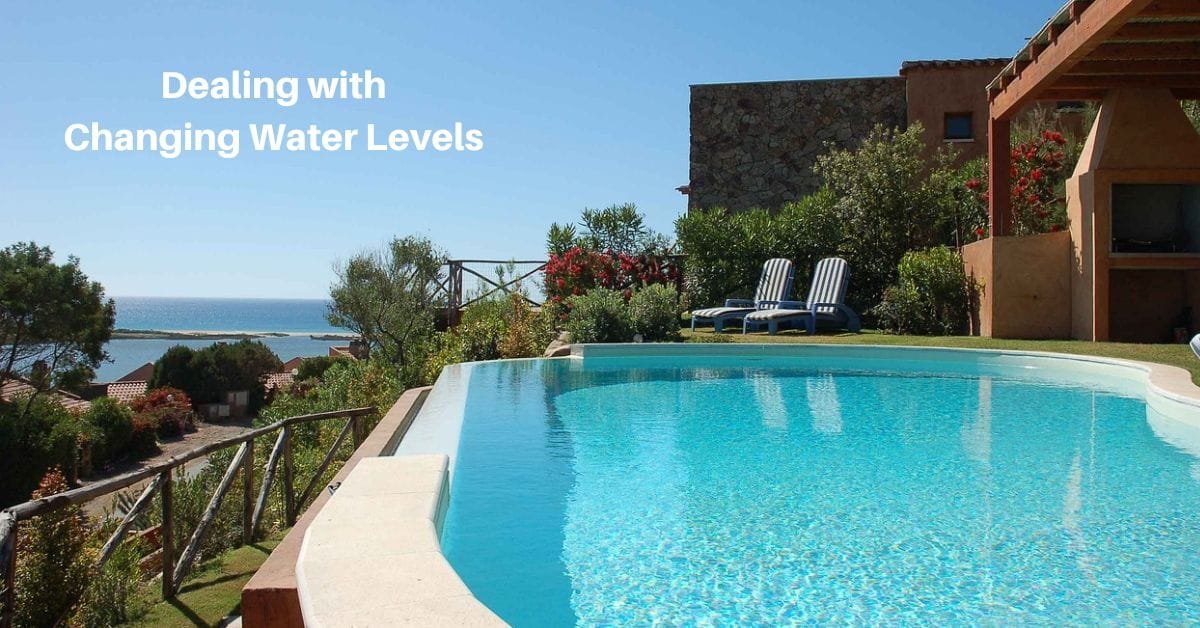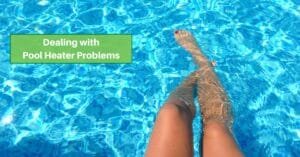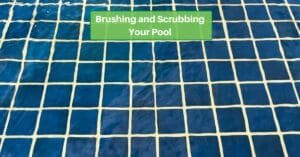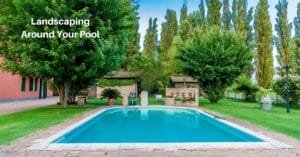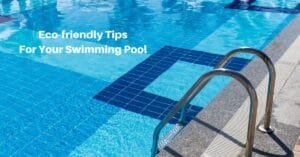Once you start maintaining a backyard pool, you realize that water levels don’t just stay put. Summer heat, a string of thunderstorms, or just regular pool use, can make the waterline creep lower or higher without much warning. And while a bit of fluctuation is normal, too much can cause problems, including chemical imbalances, equipment stress, and the need for more poor skimming.
Keeping your pool water level in the right range isn’t just a cosmetic issue; it’s part of basic, ongoing maintenance. Understanding why it changes and how to respond can save you hassle, money, and time in the long run.
Understanding the Causes of Water Level Fluctuations
Before we jump into solutions, it helps to know what you’re dealing with. Pool water levels can shift for several reasons—some gradual and some sudden—and each one calls for a slightly different approach.
Evaporation is probably the biggest culprit. Depending on where you live and the time of year, you can lose anywhere from a quarter inch to half an inch of water per day, especially during hot, dry, and windy conditions. Direct sunlight accelerates the process. If your pool is uncovered or positioned in a wide-open area with little shade or wind protection, you’ll likely see the effects more quickly.
Splash-out is another factor. Whether it’s kids doing cannonballs or adults lounging on the pool edge, regular swimming can cause water to slosh out and gradually lower the waterline. It’s a normal part of pool use, but it’s easy to forget when you’re trying to diagnose water loss.
Routine maintenance can also drain water. If you backwash your filter, vacuum to waste, or have even a small leak in the plumbing system, it will affect your water levels over time. Some pool owners find that their weekly maintenance habits are costing them more water than they realized.
On the other hand, rain can cause water levels to rise quickly. Heavy thunderstorms or a string of rainy days can overwhelm your pool’s drainage system or overflow channels. If the water level gets too high, your skimmer won’t function properly, and you may end up with surface debris and unbalanced chemicals.
Knowing these causes is the first step in developing a strategy. Once you understand what’s affecting your pool, you can take proactive steps to prevent unnecessary water loss—or control water gain—without constant monitoring or reactive fixes.
Minimizing Evaporation: Practical Strategies That Work
You can’t eliminate evaporation entirely, but there are a handful of simple, effective ways to slow it down. Some of these strategies are low-cost or even free. Others involve a bit of upfront investment for long-term savings and convenience.
Use a Pool Cover When Not in Use
A pool cover is usually the most effective way to reduce evaporation. A standard solar cover, also known as a bubble cover, can cut down evaporation by up to 95%. It’s especially useful if you don’t use your pool daily or if you’re trying to extend the swimming season slightly into spring or fall. Besides preserving water, solar covers can also help retain heat and reduce your heating bill.
If you don’t want to deal with manually covering and uncovering the pool, consider a liquid solar cover. These products create a thin, invisible layer on the surface of the water that reduces evaporation without interfering with swimming. They’re not as effective as a physical cover, but they’re incredibly easy to use and reapply, making them a convenient option for busy pool owners.
Add Shade and Windbreaks
Wind is another major driver of evaporation because it continually removes the humid air sitting above your pool’s surface, allowing more water to evaporate in its place. Creating natural or artificial windbreaks can make a big difference.
You could consider:
- Planting tall hedges or dense shrubs around the pool area
- Installing a fence or privacy screen
- Using patio umbrellas or even retractable awnings near the pool
You also get the bonus that these same features often make your pool area more comfortable and enjoyable on hot, sunny days.
Shade, in general, is a helpful tactic. Direct sun exposure raises the water temperature and speeds evaporation, so if you can add a pergola, canopy, or some well-placed trees near the pool, it’ll do double duty by keeping the water cooler and your swimmers more comfortable.
Turn Off Water Features When Not in Use
Fountains, waterfalls, and other decorative water features look great and add ambiance, but they also increase evaporation by exposing more water surface to air. When left running continuously, especially in warm or windy weather, they can significantly boost water loss. Try turning them off when not in use. You could also set them to run on a timer. This way, you still enjoy the aesthetics without the added evaporation costs.
Maintain Proper Water Temperature
If you’re heating your pool, keeping it a few degrees cooler can reduce evaporation while still maintaining comfort. Water temperature and evaporation are closely linked, and every degree matters. If you’re heating to 85°F, consider dialing it down to 82°F and see if you still find it enjoyable—that small change can add up over time.
Dealing with Rainwater and Overflow Management
While evaporation gradually lowers your pool’s water level, rain does the opposite – sometimes raising your level too much! Managing excess rainwater and preventing overflow is just as important as combating water loss. This is especially true if you live in an area where heavy downpours or summer storms are common. Excess water can lead to chemical imbalances, flooding of poolside landscaping, or even structural damage around the pool.
Understand the Impact of Rain on Your Pool
Rainwater may seem harmless, but it can dilute your pool’s chemical balance quickly. Even a moderate rainfall can drastically change your chlorine levels, pH, and alkalinity. This can make the water cloudy or promote algae growth, and it creates more work to restore your pool to a balanced, swimmable state.
In addition to diluting your chemicals, rain can carry debris, dirt, and contaminants into the pool. Managing water levels after rain events helps mitigate these effects and protects your pool’s long-term health.
Have a Plan for Excess Water
If your pool doesn’t have an automatic overflow system, rain can easily raise the water level beyond the skimmer line. When this happens, the skimmer becomes ineffective at pulling in surface debris and contaminants. To keep your filtration system working efficiently, it’s important to maintain proper water height—typically about halfway up the skimmer opening.
There are a few practical options for removing excess water:
- Submersible pumps – Handy and affordable, these pumps can be used to quickly drain water to your desired level after a heavy rain.
- Backwashing – If you have a sand or DE filter, you can use the backwash setting on your pool pump to discharge water while also cleaning your filter.
- Manual siphoning – In a pinch, using a garden hose to siphon off water is a viable low-tech option.
Just be sure any discharged water is routed to a safe area—preferably one that drains away from your home’s foundation or landscaping.
Install or Check Your Overflow Drain
Many inground pools come equipped with a built-in overflow drain, usually located near the top of the tile line. It’s designed to let water spill out at a certain point to prevent flooding. If your pool has one, make sure it’s clear of blockages. Over time, leaves, dirt, or even small critters can clog the pipe, causing it to back up.
If your pool doesn’t have an overflow drain and you often deal with excess rain, it might be worth seeing about adding one. A qualified pool technician can usually retrofit one depending on your pool’s structure.
Protect Surrounding Landscaping
Excess rain can also cause problems around your pool. Poor drainage can lead to muddy areas, erosion, or standing water. These can damage your deck, cause slippery conditions, or affect nearby plantings. Make sure your yard is graded away from the pool, and consider adding French drains or gravel borders to improve runoff if needed.
Even if your pool doesn’t flood during rainstorms, saturated soil around the pool shell can create long-term problems like shifting, settling, or cracks. Taking a proactive approach to rainwater management can save money and stress down the road.
Monitoring and Maintaining Ideal Water Levels Over Time
Keeping your pool water at the proper level isn’t just a once-in-a-while task—it’s something that needs regular monitoring, especially during the swimming season or in areas with fluctuating weather patterns. The goal is to strike a balance: not so low that it risks damage to the equipment, and not so high that it interferes with surface skimming or chemical balance.
Establish a Weekly Check Routine
Make water level inspection part of your weekly pool maintenance routine. You don’t need any fancy tools—just look at the skimmer box. Ideally, water should sit about halfway up the opening of the skimmer. Too low, and your pump could suck in air and overheat. Too high, and the skimmer can’t do its job properly.
Marking a reference point on your pool tile or wall can also help you visually detect changes in water level over time, which can indicate hidden leaks or excessive evaporation.
Track Patterns and Seasonal Changes
Every backyard is different. Some areas are more prone to evaporation due to sun exposure and wind. Others deal with frequent rainfall or unexpected storms. It helps to know what’s normal for your pool, so you can respond quickly when things shift.
During especially hot or dry spells, you may need to top off the water more frequently. ON the other hand, in wet seasons, you might be draining off water weekly. Tracking water level changes over a few seasons can give you a better sense of when to expect fluctuations.
Use Water Level Sensors for Peace of Mind
If you want to automate things a bit, consider installing a water level sensor or automatic fill system. These systems can monitor your pool’s level and either alert you or add water automatically when it drops below a certain point. Some advanced smart pool systems even integrate this feature into apps so you can get remote updates and alerts.
An automatic system can be especially helpful if you travel or manage a vacation property, or simply want one less thing to worry about.
Watch for Signs of Leaks
Gradual water loss isn’t always evaporation. If your pool is losing more than about 1/4 to 1/2 inch of water per day, it might be time to check for leaks. Wet spots around the pool, unusually high water bills, or algae growth in odd areas are all signs that water may be escaping somewhere it shouldn’t.
Simple tests like the bucket test (where a bucket of water is placed on a pool step and compared to the pool level over 24 hours) can help rule out evaporation. If you suspect a leak, don’t wait too long—getting a professional inspection can prevent major structural or plumbing issues.
Consider Long-Term Water Conservation
In areas where water conservation is a concern, maintaining optimal water levels becomes a responsibility as well as a practical matter. Minimizing overfilling, covering your pool when it’s not in use, and using water-efficient landscaping around your pool can all contribute to smarter water usage.
Every bit helps when it comes to preserving resources—and you’ll likely notice the savings on your utility bill too.

